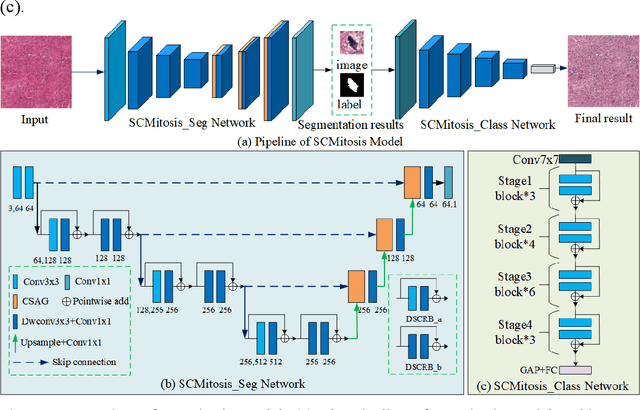Zhipeng Liu
CogniSNN: A First Exploration to Random Graph Architecture based Spiking Neural Networks with Enhanced Expandability and Neuroplasticity
May 09, 2025



Abstract:Despite advances in spiking neural networks (SNNs) in numerous tasks, their architectures remain highly similar to traditional artificial neural networks (ANNs), restricting their ability to mimic natural connections between biological neurons. This paper develops a new modeling paradigm for SNN with random graph architecture (RGA), termed Cognition-aware SNN (CogniSNN). Furthermore, we improve the expandability and neuroplasticity of CogniSNN by introducing a modified spiking residual neural node (ResNode) to counteract network degradation in deeper graph pathways, as well as a critical path-based algorithm that enables CogniSNN to perform continual learning on new tasks leveraging the features of the data and the RGA learned in the old task. Experiments show that CogniSNN with re-designed ResNode performs outstandingly in neuromorphic datasets with fewer parameters, achieving 95.5% precision in the DVS-Gesture dataset with only 5 timesteps. The critical path-based approach decreases 3% to 5% forgetting while maintaining expected performance in learning new tasks that are similar to or distinct from the old ones. This study showcases the potential of RGA-based SNN and paves a new path for biologically inspired networks based on graph theory.
CISum: Learning Cross-modality Interaction to Enhance Multimodal Semantic Coverage for Multimodal Summarization
Feb 20, 2023Abstract:Multimodal summarization (MS) aims to generate a summary from multimodal input. Previous works mainly focus on textual semantic coverage metrics such as ROUGE, which considers the visual content as supplemental data. Therefore, the summary is ineffective to cover the semantics of different modalities. This paper proposes a multi-task cross-modality learning framework (CISum) to improve multimodal semantic coverage by learning the cross-modality interaction in the multimodal article. To obtain the visual semantics, we translate images into visual descriptions based on the correlation with text content. Then, the visual description and text content are fused to generate the textual summary to capture the semantics of the multimodal content, and the most relevant image is selected as the visual summary. Furthermore, we design an automatic multimodal semantics coverage metric to evaluate the performance. Experimental results show that CISum outperforms baselines in multimodal semantics coverage metrics while maintaining the excellent performance of ROUGE and BLEU.
A Novel Dataset and a Deep Learning Method for Mitosis Nuclei Segmentation and Classification
Dec 27, 2022



Abstract:Mitosis nuclei count is one of the important indicators for the pathological diagnosis of breast cancer. The manual annotation needs experienced pathologists, which is very time-consuming and inefficient. With the development of deep learning methods, some models with good performance have emerged, but the generalization ability should be further strengthened. In this paper, we propose a two-stage mitosis segmentation and classification method, named SCMitosis. Firstly, the segmentation performance with a high recall rate is achieved by the proposed depthwise separable convolution residual block and channel-spatial attention gate. Then, a classification network is cascaded to further improve the detection performance of mitosis nuclei. The proposed model is verified on the ICPR 2012 dataset, and the highest F-score value of 0.8687 is obtained compared with the current state-of-the-art algorithms. In addition, the model also achieves good performance on GZMH dataset, which is prepared by our group and will be firstly released with the publication of this paper. The code will be available at: https://github.com/antifen/mitosis-nuclei-segmentation.
 Add to Chrome
Add to Chrome Add to Firefox
Add to Firefox Add to Edge
Add to Edge